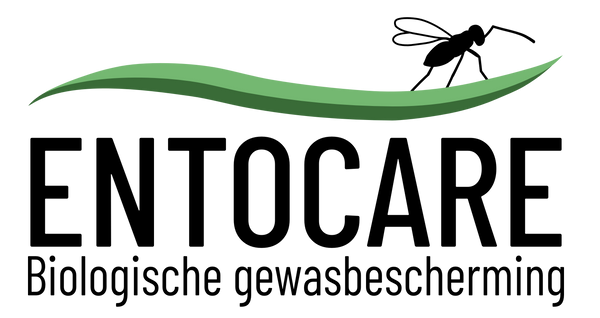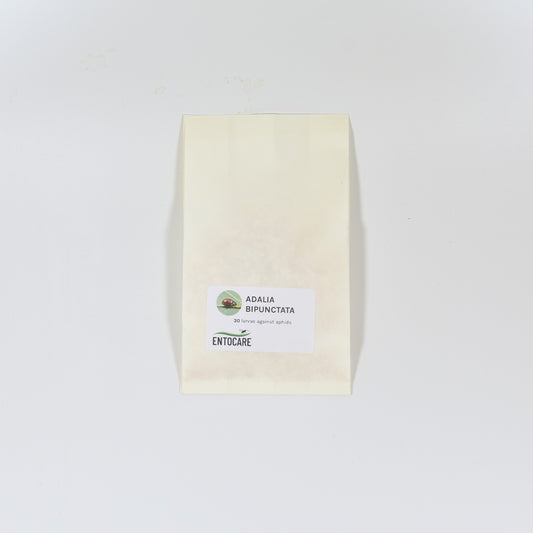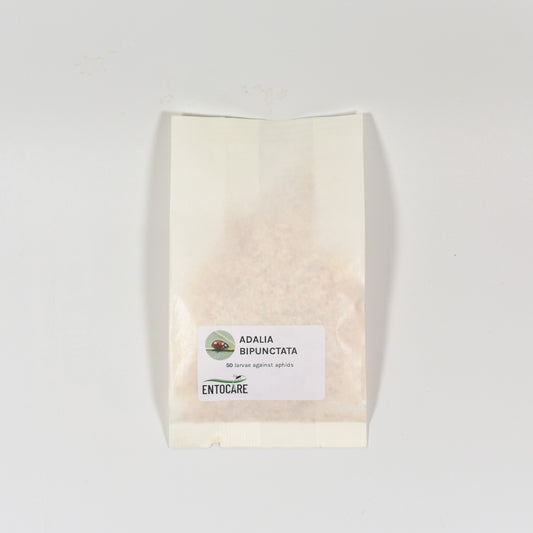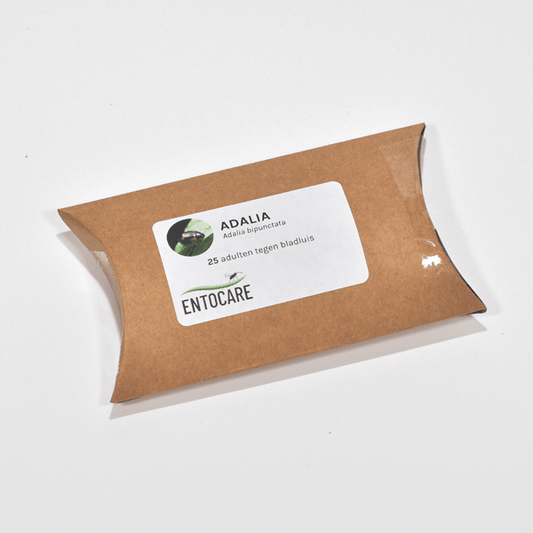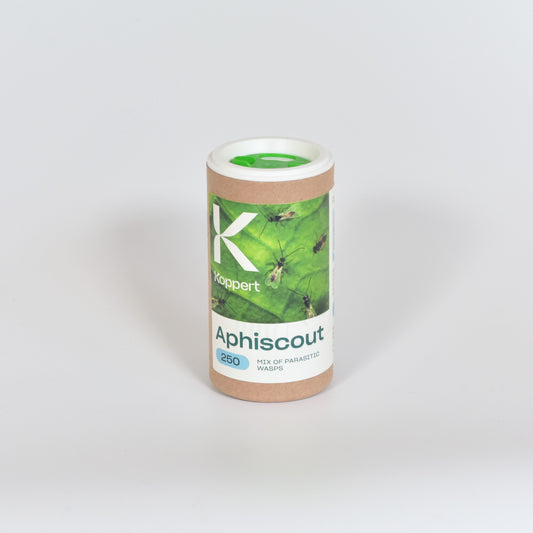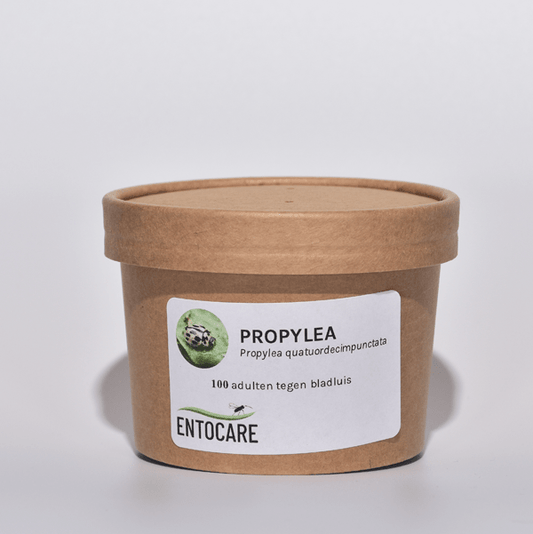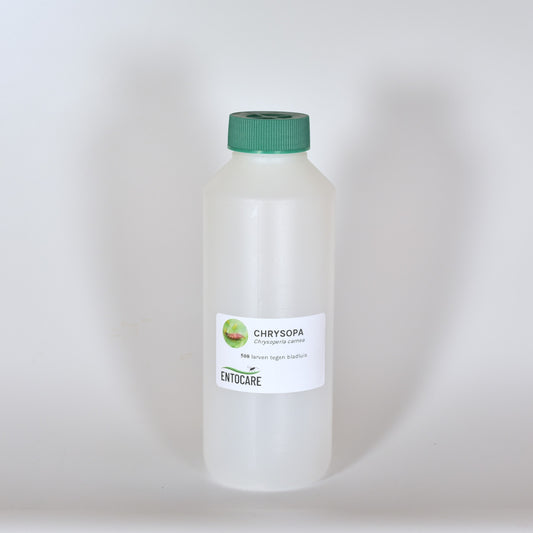
How to recognize potato aphid
The potato aphid is a rather big aphid species ranging from 2.5 to 4 mm in size. It is usually green, sometimes pink or red and has striking red eyes. The legs, siphons and cauda are long. The siphons have a dark tip. The antennae are slightly longer than their body (circa 1.2 times body length). The winged morph is mostly green with light wings andno spots on the back. Younger stages are covered with a thin waxy layer and have a dark stripe across the back. The aphid is mostly found on young plant parts. In tomato, they are usually found on the bottom on leaves, but also occur on the main stem.
Potato aphid damage and distribution
Potato aphids can be found in both indoors in greenhouses and outdoors. The aphids usually occur in groups. Potato aphids feed on plant saps, which can cause major damage. Young leaves deform and grow out curled andcrinkled. In addition, the stem can become distorted in its growth. The aphids excrete large amounts of honeydew which can damage fruits. In ornamentals, the honeydew and following sooty mold developmentcan cause growth reduction and deformations of buds. Potato aphids are a vector of many harmful plant viruses. Potato aphids are very mobile and drop themselves from the plant when disturbed. Potato aphids can be transferred mechanically by wind or persons.
Products against Potato aphid
-
ADALIA larvae - 30
Vendor:Entocare eigen kweekRegular price €10,38 EURRegular priceUnit price / per€10,38 EURSale price €10,38 EUR -
ADALIA larvae - 50
Vendor:Entocare eigen kweekRegular price €20,00 EURRegular priceUnit price / per€20,00 EURSale price €20,00 EUR -
ADALIA ladybirds - 25
Vendor:Entocare eigen kweekRegular price €27,25 EURRegular priceUnit price / per -
ADALIA larvae - 100
-
APHISCOUT - 240
-
PROPYLEA QUATUORDECIMPUNCTATA ladybirds - 100
-
ADALIA larvae - 250
-
CHRYSOPA - 500
Vendor:KoppertRegular price €33,49 EURRegular priceUnit price / per€33,49 EURSale price €33,49 EUR
-
Potato aphid life cycle
70 - 80 offspring per female
development time 10-14 days
mostly pathenogenetic reproduction
winged and wingless forms
several generations per year in greenhouse -
Potato aphid host plants
polyphagous
Solanaceae family
tomato, egg plant, potato
lettuce
various ornamental crops
-
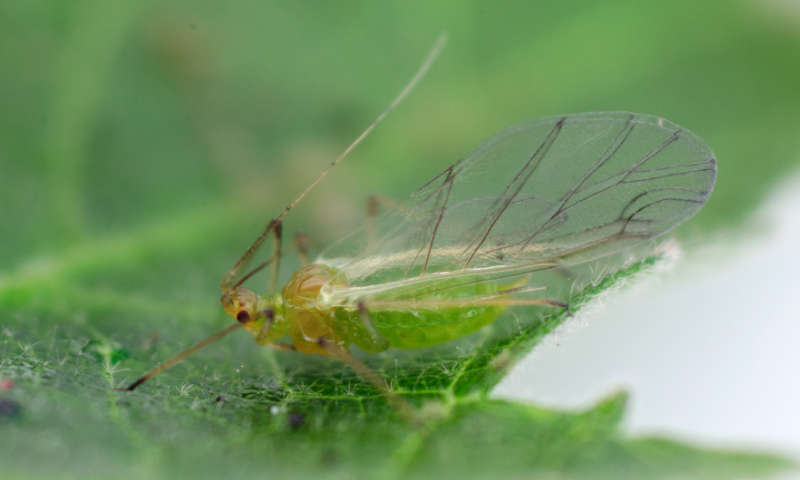
Winged potato aphid
-

Wingless potato aphid
